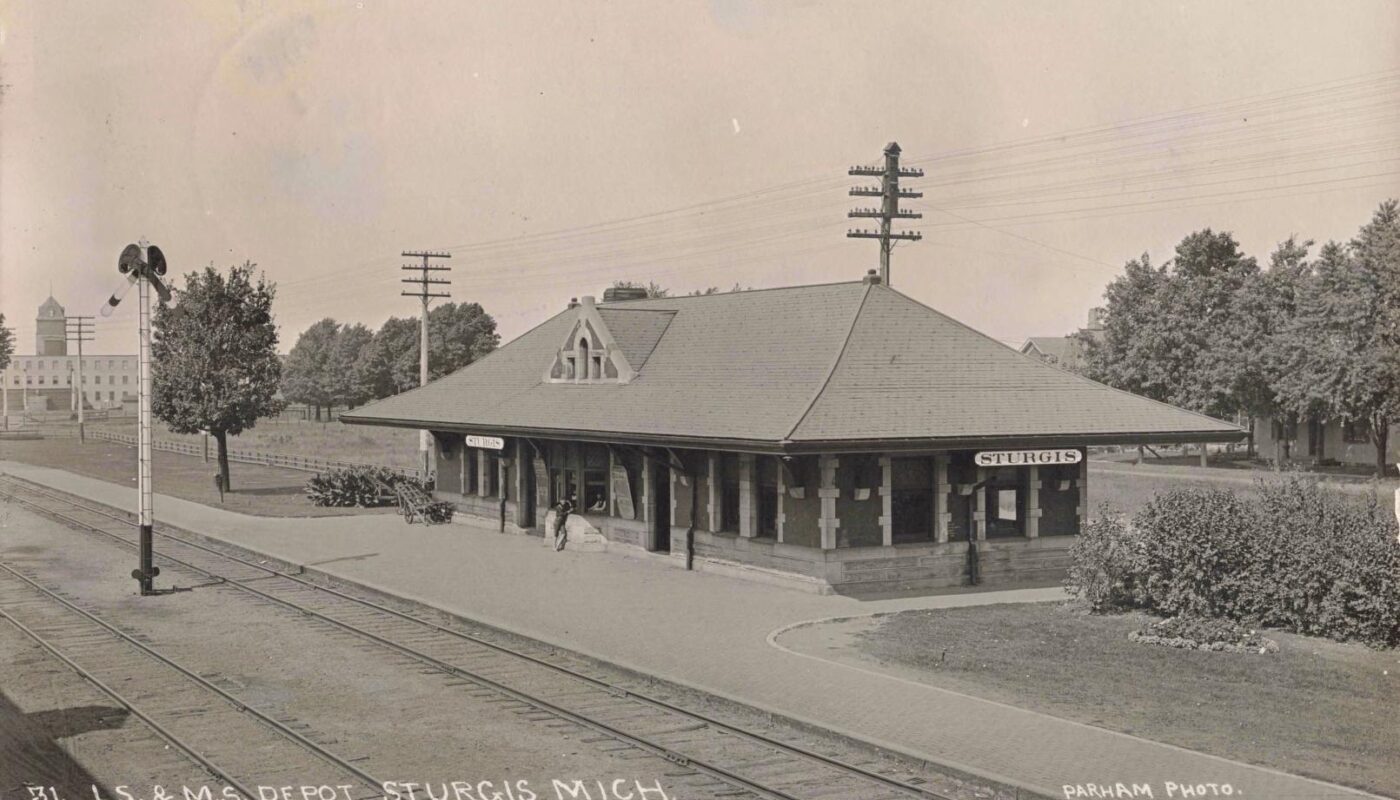The history of Sturgis Michigan began in 1827 when Judge John Sturgis settled on land in the St. Joseph Valley. According to local lore, Michigan’s Governor Lewis Cass (later a U.S. Senator) was so impressed by Mrs. Sturgis’s biscuits that he insisted the community be named “Sturgis” in her honor. The village grew steadily. A school district was organized in the 1830s, and a log schoolhouse was built. By 1855, the growing settlement was formally incorporated as the Village of Sturgis. These pioneers built simple frame buildings (the oldest surviving structure dates to 1843), tended farms, and laid the civic foundations that would shape the town’s character.
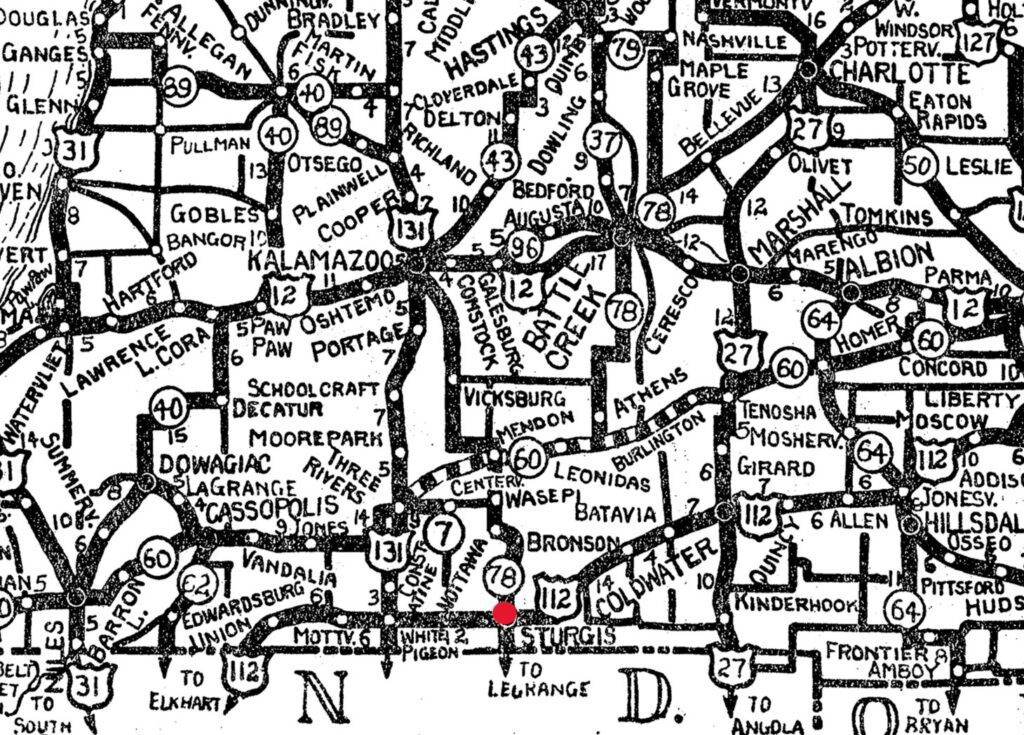
In the first two decades of the 20th century, Sturgis, Michigan, was more than just another Midwestern town. It was an early adopter of civic electricity, a furniture manufacturing hub, and a place where residents took pride in building something lasting. Dozens of real photo postcards from this era show a city alive with energy, optimism, and purpose.
Video – Inside Sturgis, Michigan The Electric City
In the early 20th century, Sturgis, Michigan punched far above its weight. From building the state’s first municipal hydroelectric dam to hosting Vice President James Sherman and launching a biplane over Chicago Street, this small town embraced the modern age with energy and pride.
Transportation and Growth (1850s–1890s)

The arrival of railroads in the 1850s was a turning point for Sturgis. In 1851, the Michigan Southern Railroad (later part of the Lake Shore & Michigan Southern) reached town, linking Sturgis to Toledo and Chicago. In 1870, a north–south line (the Grand Rapids & Indiana Railroad) crossed Sturgis, making it a critical junction. These new links brought settlers and industry. The original 1852 wooden station was replaced in 1895 by the handsome brick Tudor depot that still stands today. By the late 19th century, Sturgis’s population and economy had grown enough that it re-chartered as a city (officially in 1896).
Industry and Economy (1870s–1910s)
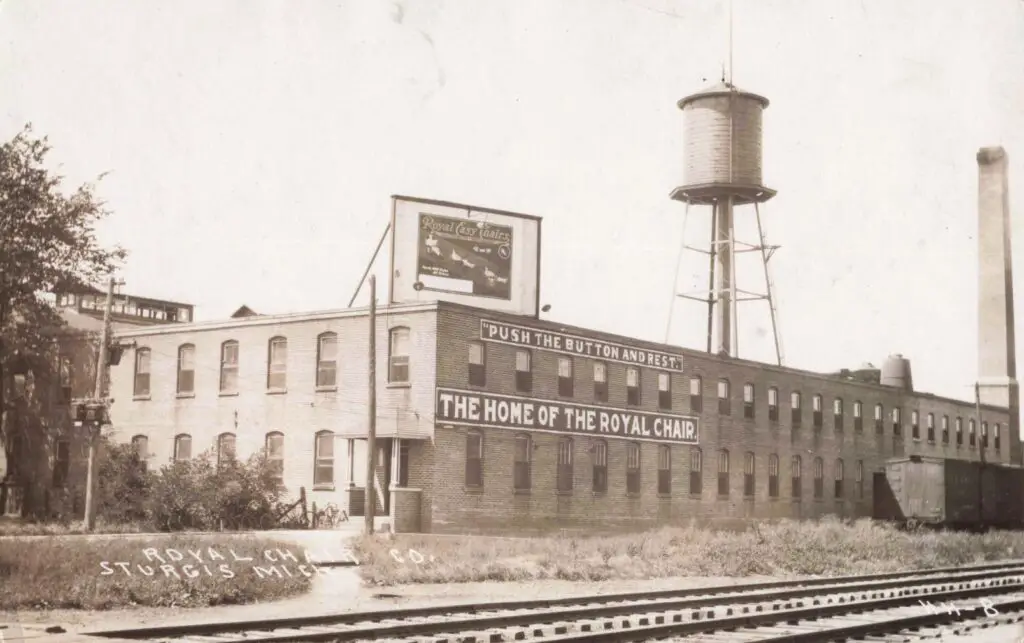
In the decades before 1900, Sturgis developed a diversified manufacturing base. The city became known for furniture-making – by 1884, it had several furniture factories, along with lumber yards and planing mills. Local grain and flour mills served surrounding farms, and a foundry operated on the St. Joseph River. These industries clustered near the rail lines, providing jobs and stimulating merchants and services downtown. By 1910, Sturgis had numerous stores, banks, and professional offices, reflecting its role as a market town for the surrounding agricultural region.
A Street That Mattered: Chicago Street in 1910
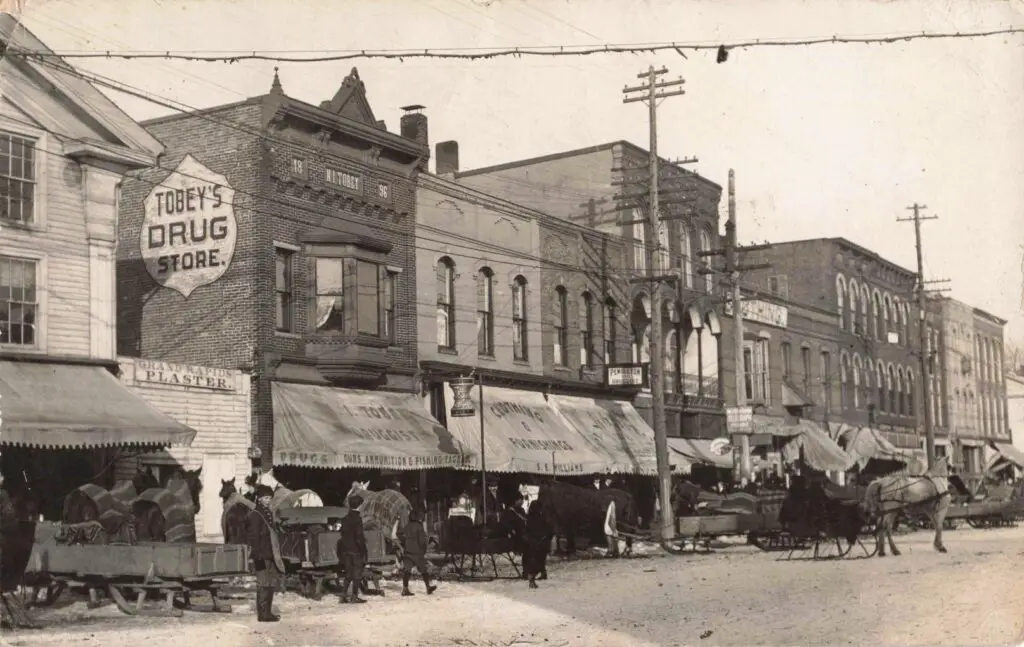
Chicago Street was the lifeblood of Sturgis. Horse-drawn wagons made their way down its dirt paths, past storefronts like Tobey’s Drug Store, Loetz & Gilhams Grocers, and George Runyan’s dry goods shop. Shopkeepers arranged goods under striped awnings while children pressed noses to bakery windows, watching for a chance at a treat. RPPCs show a vibrant commercial strip with shoppers, early automobiles, and wide pedestrian walkways.
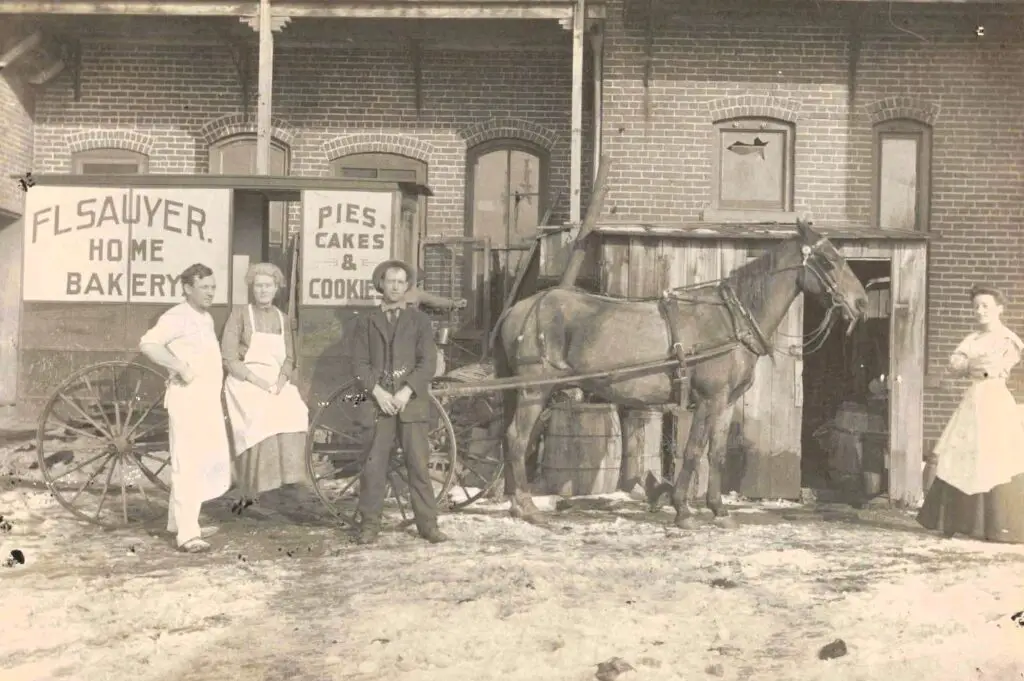
F.L. Sawyer’s Home Bakery kept locals supplied with pies, cookies, and cakes, and delivery wagons from Union Service ensured goods reached even the far corners of the city. A candid shot of a bakery wagon with onlookers adds a charming glimpse into daily life.
Education and Civic Institutions (mid-19th–1920s)

Public institutions expanded alongside the economy. In 1862, Sturgis completed a large three-story “Union” (Central) School to serve its growing population; the first high-school class graduated in 1874. As the city grew, new elementary schools were added in different wards (for example, the Third Ward School in 1892 and the First Ward School in 1911). In 1908, the city secured a Carnegie grant to build a public library, which opened in April 1909. This Carnegie library (later expanded) became a cultural centerpiece. By the 1920s, the city also had churches, fraternal lodges, and a volunteer fire department, anchoring a full civic life.
Carnegie’s Gift: A Place to Learn
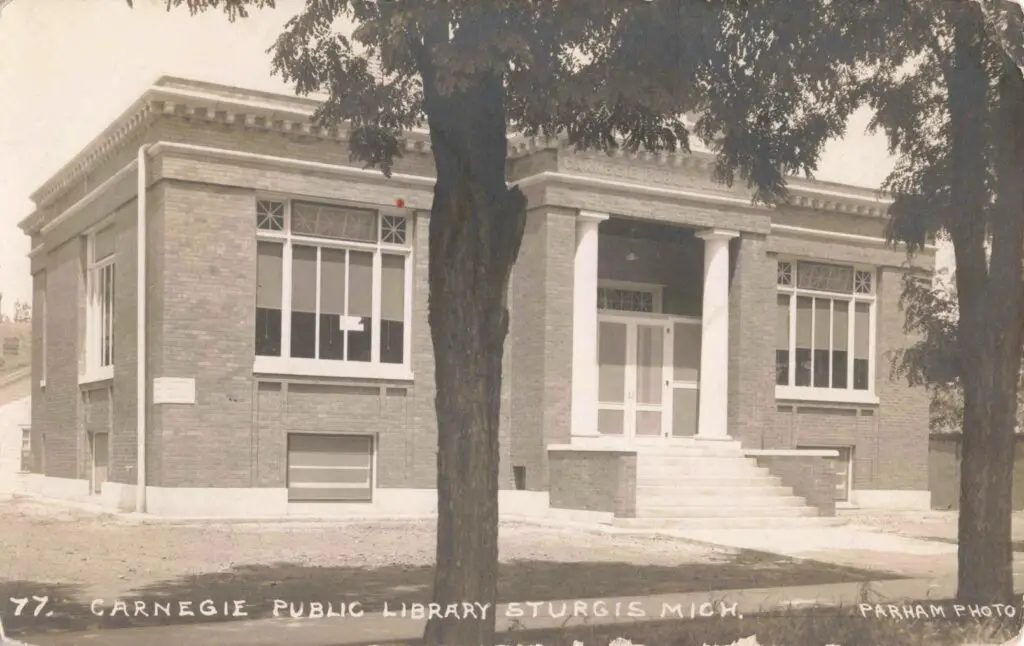
Education mattered in Sturgis. In 1909, a Carnegie Library opened on the edge of downtown. Made of brick with classical columns, it was a symbol of aspiration. Teens came to study, children came to learn, and adults came to read or meet. It was more than a building. It was an investment in the city’s future. One postcard shows boys in knickerbockers posed out front.
Electrification and Infrastructure (1890s–1910s)
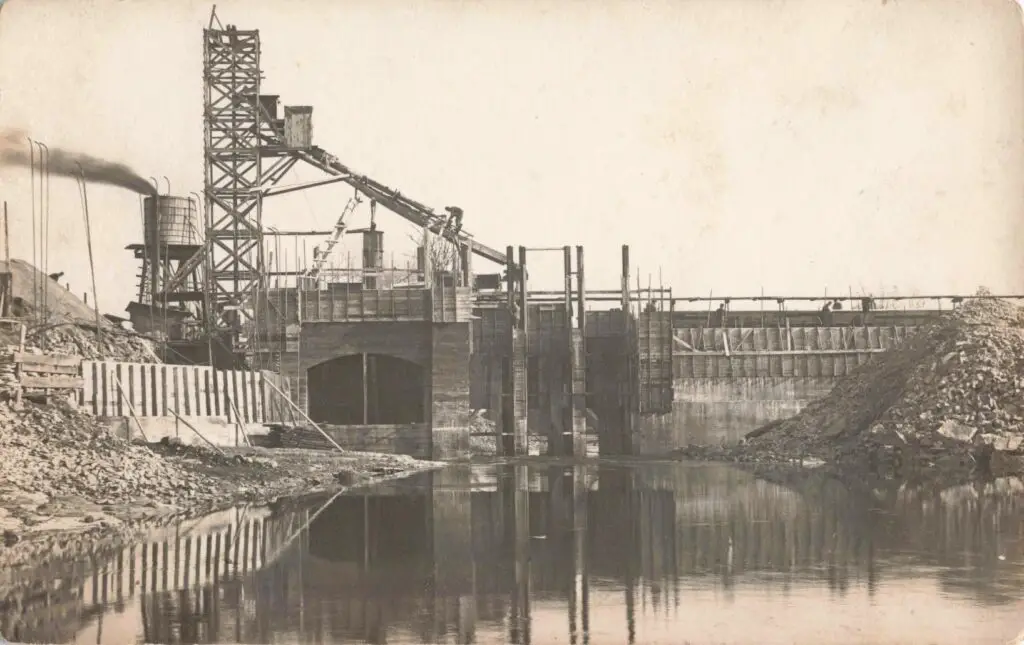
At the turn of the century, Sturgis earned the nickname “The Electric City.” In 1899, the city installed a 150-kilowatt AC generator to light streets and power homes. As demand quickly outpaced this plant, voters in 1909 approved bonds to build a hydroelectric dam on the St. Joseph River. Construction began soon after, and on September 3, 1911, the new Sturgis Dam (at Lockport Township, 17 miles east of the city) began operation.
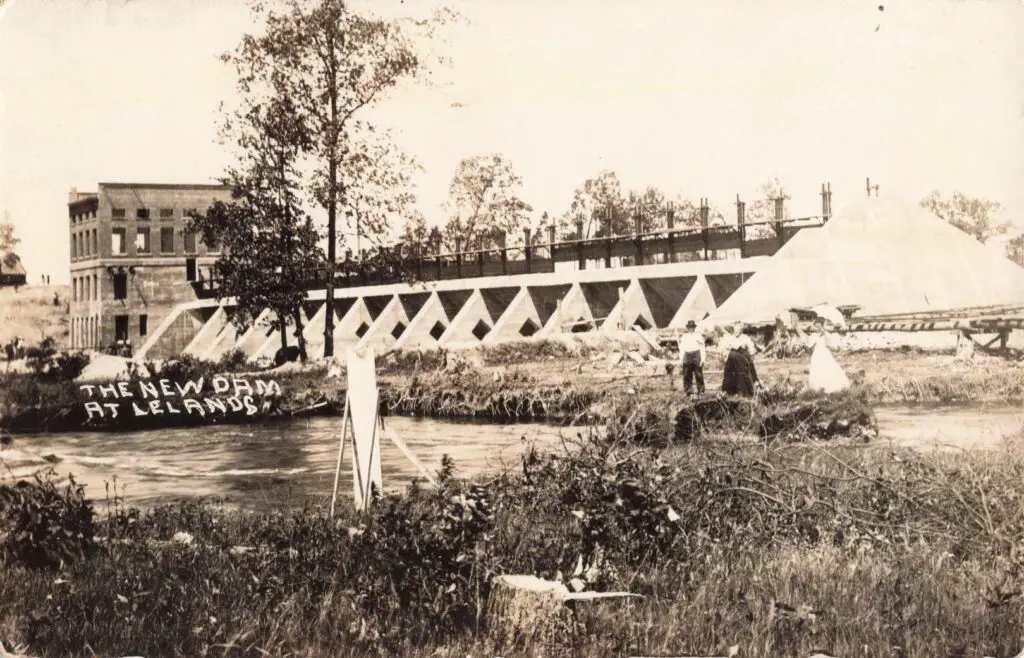
This was one of Michigan’s first municipally owned power dams – in fact, the first city-built hydropower station in the state. The dam supplied inexpensive electricity for Sturgis and nearby farms for decades, solidifying the city’s modern infrastructure. Its completion was celebrated locally (the first “Dam Days” festival began in that era), and it became a point of civic pride.
Work That Built the Town
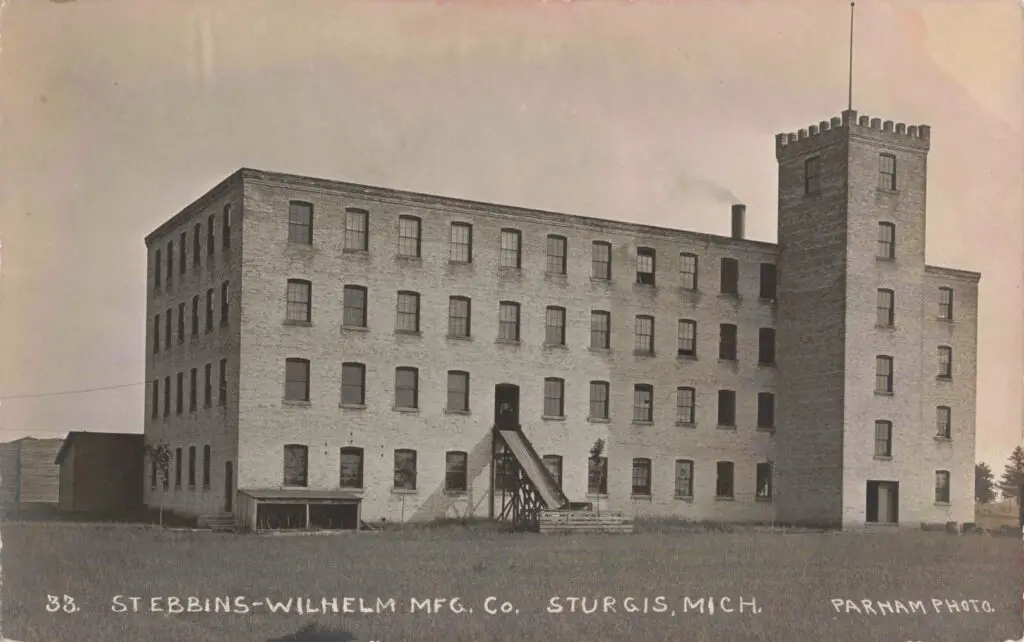
Sturgis had long moved past the age of just farming. By the 1910s, it was a full-fledged manufacturing center. The Grobneisser & Crosby Furniture Company and the Royal Chair Company employed hundreds. Towering brick factories filled orders across the Midwest. Sturgis became known for its craftsmanship and sturdy goods. Railroads carried out crates of chairs, planks, and parts to cities like Chicago and Detroit. Several images capture the size and scale of these industrial buildings.
Community Life and Milestones (1910s–1920s)

By World War I and into the 1920s, Sturgis had grown into a prosperous small city of a few thousand residents. Its downtown area, along Chicago Road (US-12), was lined with Victorian-era commercial buildings. Civic projects of this era included a new city hall and, in 1925, the construction of Sturgis Memorial Hospital, which served the region’s medical needs for many years.
Local newspapers (such as the Sturgis Daily Journal, established in the late 19th century) chronicled community events and solidified a sense of regional identity. Annual social and cultural events – such as school plays, church fairs, and later the motorcycle toy run (begun in the 1960s) – grew out of these years, but the foundations of Sturgis’s community spirit were laid in the pre-Depression era.
Sources: History of Sturgis Michigan
- For example, John Sturgis’s 1827 settlement and Governor Cass’s naming legend are documented in regional heritage accounts.
- Railroad and business histories note the arrival of the Michigan Southern Railroad in 1851 and Sturgis’s 1895 depot.
- Michigan state and city records show the village incorporation in 1855 and city charter in 1896.
- City records and newspaper archives describe early factories (furniture, mills) and the 1862 Union Schools. Municipal documents record the 1899 electric generator and 1911 hydro dam project. All facts above are drawn from these historical sources and publications
